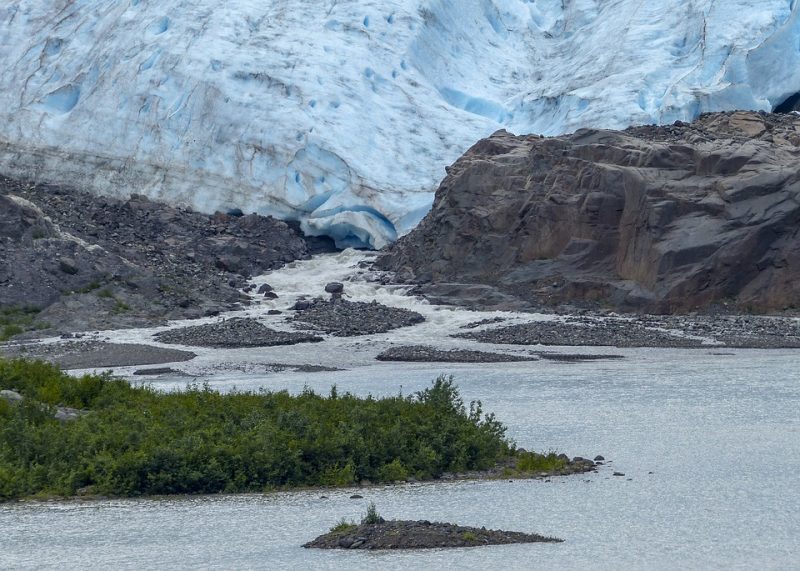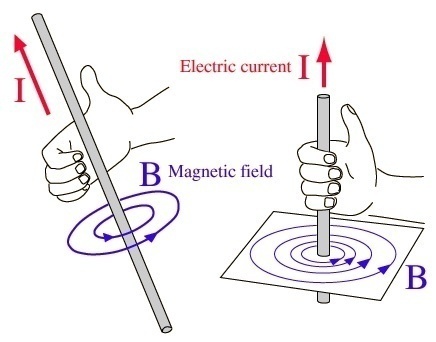
Published by Knut L. Seip, Øyvind Grøn and Hui Wang
OsloMet – Oslo Metropolitan University and the NOAA/NWS/NCEP/Climate Prediction Center
These findings are described in the article entitled Carbon dioxide precedes temperature change during short-term pauses in multi-millennial palaeoclimate records, recently published in the journal Palaeogeography, Palaeoclimatology, Palaeoecology (Palaeogeography, Palaeoclimatology, Palaeoecology 506 (2018) 101-111). This work was conducted by Knut L. Seip and Øyvind Grøn from OsloMet – Oslo Metropolitan University, and Hui Wang from the NOAA/NWS/NCEP/Climate Prediction Center.
The question could also be asked for the last 140 years. However, the period from 400,000 years back and up until the industrial revolution, say the mid-1700s, can be treated as a natural control experiment for the last 140 years. This is because it was a period without large anthropogenic contributions of CO2 to the atmosphere.
CO2 may have several sources and sinks. Oceans are the largest sinks for anthropogenic CO2, having sequestered about 40% of CO2 emissions since the beginning of the industrial era (summary in DeVries et al. 2017). It is also a source for emission of CO2 into the atmosphere. However, seismic activity may also be a source (Huybers and Langmuir 2009).
Conditions for a causal effect
For carbon dioxide to be a cause for global warming, CO2 has to come before the warming. Since most processes on the earth are cyclic, we can think of it as a peak in a time series that represents the cause that comes before the peak in the time series that represents the effect.
In this context, the peak in CO2 (or the peak in heat) has to come before the peak of global mean temperature. Previously, it had not been possible to establish whether CO2 comes before or after global temperature changes because observations of CO2 and temperature are too coarse to identify “before” and “after” relations. Thus, a prevailing view has been that CO2 and temperature changes co-vary.
In our recent study titled “Carbon dioxide precedes temperature change during short-term pauses in multi-millennial palaeoclimate records,” published in the journal Palaeo3, we have applied a novel method for identifying “before” and “after” relations, which show that, yes, CO2 comes before global temperature changes, but almost exclusively when both CO2 and temperature show pauses.
The last 400,000 years cover four glaciation and deglaciation cycles, and the leading nature of CO2 repeats itself within each cycle.
Understanding CO2, heat and temperature changes
Changes in global temperature have vast consequences, as we experience almost daily under present-day climate conditions. Thus, we have to understand what the relative contributions of the drivers of climate change are and how fast each of them works.
The practical implications mirror the scientific questions: How fast do we have to control anthropogenic emissions of CO2 and how fast do water movements in the oceans contribute to global warming, or to global cooling? It appears that the answers depend on the period we do the study. There are phenomena that act on a 100,000-year scale, multi-millennial scale, and millennial-scale, and so on, down to daily scales.
A surprising result and some questions
Our result that on a multi-millennial scale, CO2 preceded temperature change during pauses in the glacial and deglacial cycles was surprising. The sources of CO2 are obviously not anthropogenic, thus, it has to come from the oceans (most likely) or from seismic activity or some other, not yet identified, sources.
Second, we found that there is a bipolar seesaw effect between the warming of the Arctic and Antarctica that lasts for 20,000 years. However, other studies have found bipolar see-saw effects on a 100 years scale (Chylek et al. 2010) and 2000 years (Stocker and Johnsen 2003; Siddall et al. 2006). Thus, there might be temperature patterns that repeat themselves on different time scales.
Our results are empirical. They form a base of knowledge that models and other investigating tools can be compared to.

Figure 1 Results. Image republished with permission from Elsevier from https://doi.org/10.1016/j.palaeo.2018.06.021

Figure 2 Method. Image republished with permission from Elsevier from https://doi.org/10.1016/j.palaeo.2018.06.021
Questions raised
- What are the sources of the CO2 that comes before temperature changes?
- Are changes in temperature outside the pauses caused by changes in heat from the oceans?
- What type of period could we presently be in if there were no anthropogenic CO2, a glaciation period or a pause period?
- How do you see that one variable comes “Before” another?
It is easy to see what comes first and what comes “after” if the time series that represent the potential cause and effects show clear peaks. A series that peak first may represent a potential cause for a variable that peaks after. However, to come first is only a required condition, not a sufficient condition. And there are other caveats. For example, it is the colder water that absorbs the most CO2, thus, a trough in water temperature would precede a peak in CO2 absorption. Some of the caveats, like this one, can easily be overcome.
Our method calculates “before” and “after” for three consecutive pairs of observations. The trick has two components:
- Instead of showing the potential cause and effect series as time series along a time axis, we plot the series on an x-axis and a y-axis, that is, a phase plot.
- Then we calculate the rotation of the trajectories in the phase plot.
- Depending upon how the trajectories rotate, we can infer which series comes first and which comes last.
Last, it is easy to see this when the two series are perfect cyclic functions, like sine functions. However, how do you know that the method catches the truth (or is close to the truth) when the time series are quasi-cyclic observations? We did this for two economic time series where one is a “before” series by design (it forecasts changes in the gross domestic product). And, yes, it worked, except when the economy is very strange.

Figure 3 Methods details. By using Equation 1 in the main text we identify rotational properties in the phase plot. Positive values show that the rotation is counter clock-wise. Credit: Own work Oguraclutch / Wikipedia, Public Domain
Literature:
- Chylek, P., C. K. Folland, G. Lesins and M. K. Dubey (2010). “Twentieth century bipolar seesaw of the Arctic and Antarctic surface air temperatures.” Geophysical Research Letters 37.
- DeVries, T., M. Holzer and F. Primeau (2017). “Recent increase in carbon uptake driven by weaker upper -ocean overturning.” Nature 542: 315- 220.
- Huybers, P. and C. Langmuir (2009). “Feedback between deglaciation, volcanism, and atmospheric CO2.” Earth and Planetary Science Letters 286(3-4): 479-491.
- Siddall, M., T. F. Stocker, T. Blunier, R. Spahni, J. F. McManus and E. Bard (2006). “Using a maximum simplicity paleoclimate model to simulate millennial variability during the last four glacial periods.” Quaternary Science Reviews 25(23-24): 3185-3197.
- Stocker, T. F. and S. J. Johnsen (2003). “A minimum thermodynamic model for the bipolar seesaw.” Paleoceanography 18(4).









